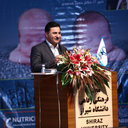Neuromuscular complication after liver transplant in children: a single-center experience.
关键词
抽象
OBJECTIVE
Neurologic complications are a significant cause of morbidity in children after liver transplant. In this study, we sought to evaluate the neurologic complications in children after liver transplant.
METHODS
All children aged younger than 18 years old who had undergone liver transplant between June 2004 and June 2007 were included in this prospective study. There were 30 boys (62.5%) and 18 girls (37.5%) (mean age, 9.6 -/+ 4.3 years; mean duration of follow-up, 21.6 -/+ 9.4 months). The most common indications for liver transplant were biliary atresia (n=12, 25%), Wilson disease (n=7, 14.6%), tyrosinemia (n=7, 14.6%), progressive familial intrahepatic cholestasis (n=6, 12.5%), and autoimmune cirrhosis (n=5, 10.4%).
RESULTS
Immunosuppressive medication consisted tacrolimus (n=44, 91.7%) or cyclosporine (n=4, 8.3%) combined with mycophenolate mofetil (n=33, 68.7%) and prednisolone (n=18, 37.5%). The most-common neurologic complications were tremor (n=8, 16.7%), convulsions (n=6, 12.5%), insomnia (n=6, 12.5%), headache (n=5, 10.4%), muscle cramps (n=5, 10.4%), paresthesia (n=3, 6.2%), and weakness (n=3, 6.2%).
CONCLUSIONS
We conclude that the most-common neurologic complication after liver transplant in children in contrast to other studies is tremor, same as adult patients. This may be due to higher rate of use of tacrolimus in our patients.



